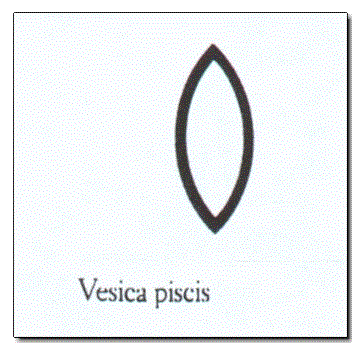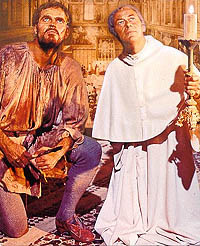ART WARS:
The Agony and the Ya-Ya
Today's birthdays:
-
Charlton Heston
-
Anne Rice
-
Patti LaBelle
To honor the birth of these three noted spiritual leaders, I make the following suggestion: Use the mandorla as the New Orleans Mardi Gras symbol. Rice lives in New Orleans and LaBelle's classic "Lady Marmalade" deals with life in that colorful city.
What, you may well ask, is the mandorla? This striking visual symbol was most recently displayed prominently at a meeting of U.S. cardinals in the Pope's private library on Shakespeare's birthday. The symbol appears in the upper half of a painting above the Pope.

From Church Anatomy:
The illustration below shows how Barbara G. Walker in her excellent book "The Woman’s Encyclopedia of Myths and Secrets" describes the mandorla.
|
The Agony
and the Ecstasy
Based on a novel by Irving Stone, this 1965 movie focuses on the relationship between Michelangelo (Charlton Heston) and Pope Julius II (Rex Harrison), who commissioned the artist to paint the Sistine Chapel ceiling.

|

Vesica piscis
Mandorla, "almond," the pointed-oval sign of the yoni, is used in oriental art to signify the divine female genital; also called vesica piscis, the Vessel of the Fish. Almonds were holy symbols because of their female, yonic connotations.
Christian art similarly used the mandorla as a frame for figures of God, Jesus, and saints, because the artists forgot what it formerly meant. I. Frazer, G.B., 403
|
For further details on the mandorla (also known as the "ya-ya") see my June 12, 2002, note
The Ya-Ya Monologues.
A somewhat less lurid use of the mandorla in religious art — the emblem of the Episcopal Diocese of South Carolina, taken from the website of
St. Michael's Church in Charleston — is shown below.















